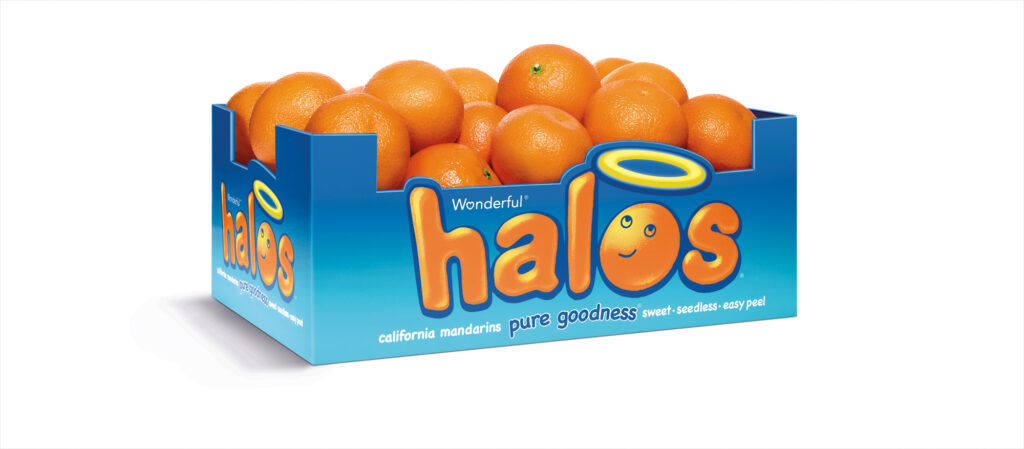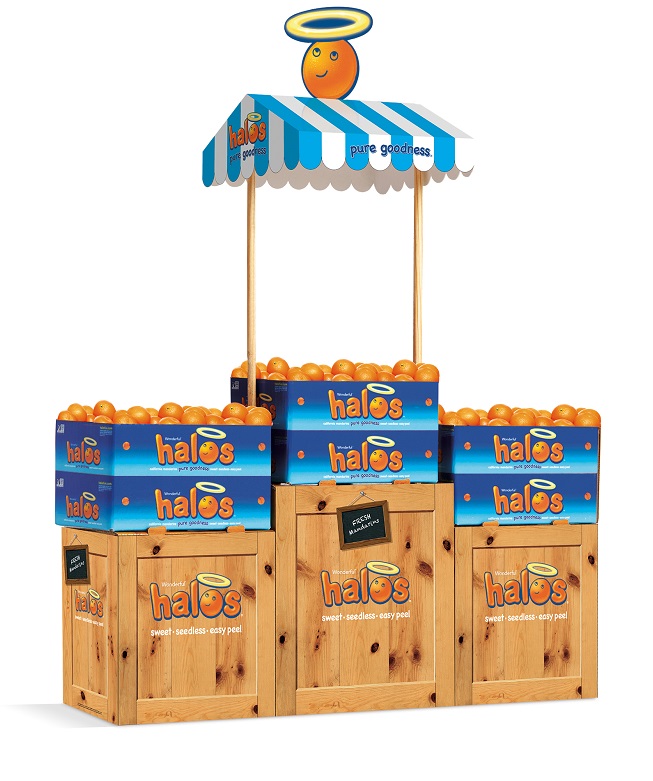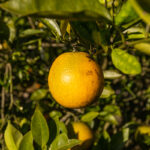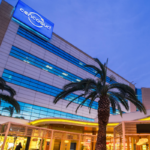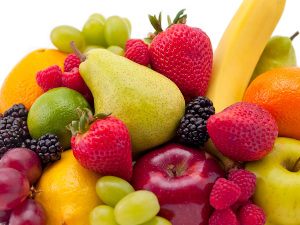As a joint venture collapsed, a leading mandarin brand was born

The largest citrus grower in North America, Wonderful Citrus, launched its Halos mandarin brand several years ago under unusual circumstances and amid spectacular growth in the U.S. seedless mandarin market.
In 2013, something strange happened in the U.S. mandarin market. A newly launched and unknown brand became the category leader virtually overnight. This peculiarity came amid explosive growth in both the supply and demand of high-quality seedless mandarins, undoubtedly one of the star products of the fresh produce industry over recent years.
Such unrivaled success with a new brand was made possible due to the collapse of a joint venture between two giants of the U.S. citrus industry - Wonderful Citrus (formerly Paramount Citrus) and Sun Pacific. At the turn of the century, the companies had decided to work together on a brand to maximize the potential market success of seedless mandarins, which then had only recently been introduced to the U.S. from Spain and Morocco and were still almost unknown to consumers.
The Cuties brand name was trademarked in 2001, jointly owned by the two entities. Paramount Citrus - whose parent organization Wonderful Company (formerly Roll Global), owned by billionaire couple Lynda and Stewart Resnick, market brands including Fiji Water and POM Wonderful pomegranate juice - would develop advertising and marketing, while Sun Pacific would handle sales.
Over the following decade, the Cuties brand grew rapidly and established itself as a staple citrus product at retail, driven by its offering of a sweet alternative to the traditional orange and growing U.S. consumer desire for convenience.
Given the rapid growth of the mandarin category, both citrus brands were looking forward to separating in order to control their own destiny and the partnership fell apart in May 2013, with Sun Pacific taking over full ownership of the Cuties brand for an undisclosed sum. But Wonderful had no intention of departing from the mandarin market. In a matter of days, the company - which has an in-house marketing agency - had brainstormed a new brand name and logo. Later that year, the first Halos rolled out to retailers.
By virtue of having more trees than Sun Pacific, Wonderful Halos instantly became the country’s biggest seedless mandarin brand.
DIFFERING VIEWS ON HOW TO CONTINUE SUCCESS
Reflecting on the separation, Zak Laffite, who is currently President of Wonderful Citrus but several years ago played a more behind-the-scenes role, said the company’s desire to invest more heavily in marketing than its partner - as supply levels finally began to close the gap on demand after years of undersupply - was a big factor that led to the separation.
But he said: “In the end you have two very competent and strong companies on their own outside of what is Cuties, and with that comes divergent points of view in terms of how the future should be written.”
“In some cases, you have the option to continue to double down on the tactics that have made you successful that far and on the other hand you might be facing a different sort of challenge. Without having a crystal ball, it's going to be a meeting of the minds at that point. I think that question of what does the next chapter bring was a big weight on the teams and the ownerships at that point in time,” he said.
Joint ventures that bring together two leading companies from the same country in the same fresh produce category to collaborate on a brand are a rare occurrence. But Laffite said that although it was an uncommon type of partnership, it made sense for both parties.
“To some extent it was actually a very complementary partnership during that period of fast growth and expansion of mandarins as a category,” he said.
“Some of the quality parameters you see today that have now become the unspoken rules of mandarins - in terms of the varietal selections and the commitment to not having seeds and the easy-peeling aspect - were born out of that collaboration between our two companies during the latter part of the 2000s and during the last decade.”
THE BIRTH OF A MARKET-LEADING BRAND
Just a few days after being notified by Sun Pacific that they wanted to end the partnership, the Wonderful Company came up with the Halos brand name at a meeting in a matter of hours. And just a few days after that, the branding and logo had been created.
Laffite said it felt like a “lightning decision from the moment the announcement came out to the moment we turned the page”.
“It’s all a real testament to the genius and the experience that Lynda Resnick has in terms of brand creation. Once the decision was made, the focus went into building a new brand.”
The challenge then for Wonderful was to avoid becoming a victim of its own success, competing with a brand that it had helped to become well recognized within the produce aisles. It hit the ground running with a huge marketing campaign using “every single medium that we could possibly use to build a brand”, Laffite said. He added that Wonderful knew that retailers would need its volume to continue to fill their shelves and would enjoy having more brands to choose from.
“So, between the marketing campaign to create brand awareness and the distribution we had because of our size, we quickly established ourselves. We probably made more strides in that first year than any brand would expect to have done,” he said.
The launch of the Halos brand came amid a spectacular growth of the U.S. mandarin market over the past two decades. In 2001, there were less than 3,000 acres of mainly seeded easy peelers like clementines and tangos in California, Laffite estimated. But he said this figure has since grown more than 20-fold to over 70,000 acres, with newer varieties that had more desirable characteristics displacing the older cultivars.
That big expansion in plantings continued into much of the 2010s but began to slow down in the middle of the decade as supplies skyrocketed and became more aligned with demand levels.
“Mandarins became the primary dollar generator at retail, overrunning oranges - the long-standing king of citrus. At one point, somewhere in the middle of the 2010s, they became 40 percent of citrus dollars,” he said.
Halos continue to be one of the category leaders. This has come in part thanks to heavy investments in consumer marketing campaigns and an army of in-store merchandisers around the country that set up eye-catching displays to drive retail sales.
OPPORTUNITIES FOR THE SOUTHERN HEMISPHERE
Lagging a few years behind, overseas mandarin production is roughly where the U.S. industry was around 2013, Laffite said, with key Southern Hemisphere supply countries like Chile, Peru and South Africa currently seeing enormous year-on-year growth.
But a key difference between production in California and overseas countries is the latter’s diversity of growing regions, which Laffite said can lead to variable quality and underscores the importance of branding. The situation, he said, is similar to the U.S. in the mid-2000s when there was a need to differentiate the newer varieties from the older ones to assure customers of high-quality levels.
“There is a similar opportunity during that counter-season window as well,” he said.
Southern Hemisphere mandarin supplies have started to play a role in the Halos offering over recent years, with Wonderful in 2018 starting import trials over the U.S. summer months to fill the supply gap left by its domestic production regions. The company brought in fruit from South America, South Africa and Australia, betting that a year-round supply of consistently high-quality fruit would be essential to further boosting consumption.
“Having Halos on the shelf 12 months out of the year is a priority for us, and we have been very selective in terms of who we have partnered with, not only from a shipper standpoint but also in terms of the regions and the selection of varieties,” Laffite said.
“It is a growth vehicle for the Southern Hemisphere as well, for three reasons: it addresses the variability of having multiple brands; it eliminates some of that fragmentation; and it provides a familiar brand that consumers know delivers quality consistently.”
“It just adds to our brand and for all those that are loyal Halos consumers it gives them one less opportunity to buy something else, and I think that is really important,” he concluded.
Republished rom the May edition of Visión Fruticola magazine













